
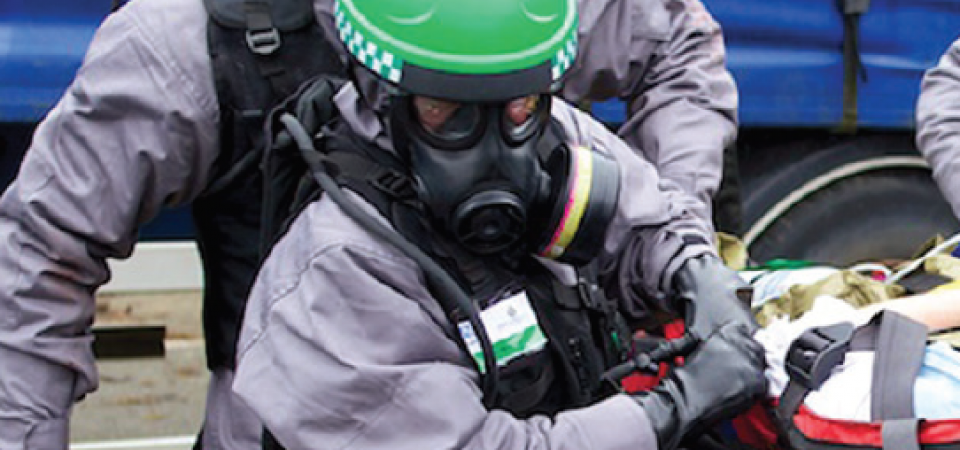
Report: M.L. JOHNSON (GERMANY), J. BELIN, F. DORANDEU, M. GUILLE (FRANCE)
When Investment for Medical Countermeasures Against Rare, but Dangerous Agents Becomes Cost Effective – The Ebola Case
There are countless chemical, biological, radiological, and nuclear (CBRN) agents that are proficient enough to harm individuals. Examples include viruses (e.g. influenza) and bacteria which are widely distributed by nature, but also some which are far less common, such as the Ebola virus. Cases include chemical (e.g. organophosphorus compounds [OP]) and radiological agents which have been birthed by humans. Although some CBRN agents pose low prevalence (the proportion of individuals in a population at risk that are diversely affected) and incidence (number of new cases of a disease caused by CBRN agents over a given period divided by the population at risk), or even lack probability of emerging at all, some bear the potential to cause catastrophic impact to society.
The US Centers for Disease Control and Prevention (US CDC) has classified such biological agents as “Category A” biological threats. Examples include those which cause anthrax, plague, smallpox, tularemia, and viral hemorrhagic fevers such as Ebola (US CDC, 2000). Indeed, in addition to potential exposure via natural release (except smallpox which was declared eradicated by the World Health Organisation [WHO] in 1980), the pathogens responsible for many such diseases have been militarised in the past by such nations as the US, UK and former Soviet Union.
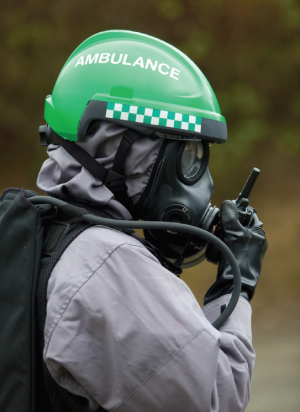
While rarely seen in nature within the boundaries of the US and European countries, they pose a high risk to national security because they could be disseminated, although not necessarily easily. In some cases, they may only be transmitted from person to person. They may result in high mortality rates and have the potential to make a major impact on public health. They will always cause public panic if the human hand is proved to be behind the event and may induce social disruption; and require special action for public health preparedness. Similarly, some chemical and radiological agents are high on the threat list of possible agents that could be used by terrorist organisations, non-state actors or even state-sponsored groups (e.g. the Tokyo subway attack in 1995 by the AUM Shinrikyo cult with the highly toxic OP nerve agent sarin).
Even so, their release could easily be facilitated accidentally as in the case of radiation released during the nuclear disasters in Chernobyl in 1986 and the Fukushima Daiichi plant in 2011, or even via industrial pollution. While there are no reliable estimates as to how many people suffer from pesticide-related health effects each year (e.g. via OP), studies indicate the annual incidence rates of acute pesticide poisoning in agricultural workers may be as high as 18.2 per 100,000 full time workers in developed countries up to, for example, 180 per 100,000 in Sri Lanka (Thundiyil, Stober, Besbelli, & Pronczuk, 2008).
Assuming diligent medical research and development (R&D), populations could be protected via new prophylactic drugs and vaccines or post-exposure treatment with antidotes and antimicrobials. Nonetheless, developers and manufacturers of such medical countermeasures (MedCM) are not empowered to address all these threats sufficiently. This is because while sales remain uncertain, it is expensive to develop MedCM. Depending on the agent targeted and type of MedCM, the cost of developing one MedCM ranges between roughly 850 million (Reeves, 2015) to 1.5 billion United States Dollars (USD) (Robinson, 2015). In cases where funding is provided by private investors (not government), additional cost factors such as cost of capital (or capitalized expense) must normally also be factored. Capitalized expense is the opportunity cost of the money spent to progress drug development and includes the return on investment that private investors require in order to put these funds at risk. When capitalized expenses apply (e.g. most often the case for drugs against conventional diseases), total capitalized costs can nearly double – approaching total expenses of up to nearly 3 billion USD (DiMasi, Grabowski, & Hansen, 2016).
These medical costs are generated during a development process of up to 20 years for drugs (less for other types of MedCM such as diagnostic assays) which is heavily affected by uncertainty as to whether or not the new MedCM can successfully be determined by the regulatory authorities to be both efficacious and safe for human consumption. Consequently, not only does prevalence and incidence of the disease have to be high enough to provoke industry consideration for MedCM development, but industry must also be confident that a sufficient number of MedCM recipients will be willing and able to pay its set price. Only by targeting disease areas with high market sales volume, can the survivability and vitality of industry business models to achieve growth be safeguarded.
R&D in MedCM could be viewed as a quasi-public good. A public good is a good where one person's use does not reduce the amount available for others and where once the good is provided, then no one can be excluded from using the good (Varian 1992). Examples include public health and welfare programs, education, roads, security, and environment. However, while research in MedCM in one country can provide positive externalities to other countries, this can create a “free-rider” problem. To avoid this “free-rider” condition – that is, a situation where one or few countries work for solutions while the rest of the world waits to reap any potential benefits, appropriate international policy and public intervention is needed to delegate the various objectives which are to be achieved.
Hence, concerning protection against highly dangerous, but rare agents, it is necessary to have international policies in place which can effectively drive responsible preparedness plans. Only through the commitment of sufficient government incentives can the necessary free market characteristics be generated in order to motivate and engage industry adequately – attracting private investment and other resources away from products with more stable and substantial sales and earnings potential.
Although several signs of policy development in Europe can be traced, Europe's ability to impact business feasibility and spark large and wide industry commitment has yet to be accomplished. Consequently, MedCM development initiatives remain minimal outside the US and it remains unclear who the international buyers of such MedCM may be.
Lack of an Ebola vaccine is an obvious example of insufficient investment in MedCM. Interestingly, already no later than the year 2000 a CDC strategy planning workgroup had listed Ebola as a top “Category A” biological threat. Fourteen years later; however, in March 2014, the outbreak of Ebola virus in Guinea made it evident that a MedCM had not been sufficiently progressed; hence, there was no vaccine. Although the US Bioshield programme was launched back in 2004, its initial efforts focused on securing next-generation vaccines for anthrax and smallpox.
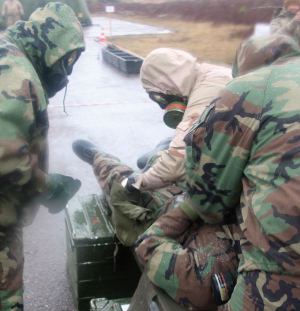
Accordingly, while the US and a handful of other countries included MedCM against anthrax and smallpox in their national stockpiles, Ebola emerged in 2014 as a top of the news killer. This perhaps goes to show the difficulty of prioritisation versus threat assessment. Indeed, with unprecedented magnitude, the latest Ebola outbreak 2014/2015 claimed over 11,000 lives in Guinea, Liberia and Sierra Leone by March 2015. Consequently, hindsight has driven an urgent response to prioritise the availability of innovative MedCM against Ebola.
This powerful reaction to the Ebola threat included the formation of the world's first international consortia to accelerate developmental progress of initially two MedCM. One of these is jointly developed by GlaxoSmithKline and the US National Institutes of Health (NIH) and one from NewLink Genetics and the Public Health Agency of Canada. During the most recent Ebola outbreak, the experimental drug, ZMapp, received much attention, but the ability to scale up supply in the short-term was extremely limited and its efficacy uncertain (Tully, Lambe, Gilbert, & Hill, 2015).
In response, the Department of Health and Human Services' (HHS) office of the assistant secretary for preparedness and response (ASPR) announced in September 2014, that the ASPR's biomedical advanced research and development authority (BARDA) would provide funding, and other technical support, through a 24.9 million USD, 18-month contract with Mapp Biopharmaceutical Inc. of San Diego, California. This contract was extendable up to a total of 42.3 million USD (US HHS 2014). More recently, BARDA reported its total accumulated investments for numerous Ebola vaccines and therapeutics, manufacturing, diagnostics, and studies had reached almost 215 million USD – specifically for vaccines and therapeutics ~176 million USD (BARDA, 2015).
The project with Mapp Biopharmaceutical was the first BARDA programme supporting the development of a MedCM against viruses that cause viral hemorrhagic fevers, such as Ebola. So, given that the brutal Ebola killer virus was discovered in 1976 and re-emerged for well over 30 occasions, why did the international community not initiate a MedCM programme earlier and what exactly drove the decision to do so now? Using Ebola as an example, it is perhaps useful firstly to explore what may have led to the international community's laissez-faire attitude toward the disease, then highlight possible reasons for a re-evaluation of its status as a threat worthy of high levels of concern and action.
To understand the situation which led to laissez-faire, it is important to put the threat into perspective. One must remain aware that many African nations are still burdened with several widespread diseases which cause far higher fatality rates, e.g. pneumonia, HIV, malaria, diarrhoea, tuberculosis, measles, whooping cough, tetanus, meningitis and syphilis. In many instances, developed countries are already trying to upgrade Africa's current medical management programmes closer to state-of-the-art capabilities.
So, even if international responsibility and partnership could have evoked a strong will to support Ebola MedCM programmes, establishing financial priority over other international programmes aimed at basic, unmet medical needs would have remained challenging. Thus, a paramount reason why a MedCM could not be adequately prepared is that, in comparison, Ebola is still a fairly rare disease. Consequently, current economic tools and metrics used in allocating funding did not determine monetary levels sufficient enough to develop MedCM.
Indeed, in order to quantify the burden of disease from mortality and morbidity, the WHO applies a metric known as disability-adjusted life year (DALY). "One DALY can be thought of as one lost year of healthy life. The sum of these DALYs across the population, or the burden of disease, can be thought of as a measurement of the gap between current health status and an ideal health situation where the entire population lives to an advanced age, free of disease and disability" (WHO, 2015).
DALYs may be used to evaluate health policies, compare intervention alternatives and to assess risk factors. When evaluating cost effectiveness, the WHO threshold values for intervention are defined as very cost effective if the cost per DALY averted is less than the gross domestic product (GDP) per capita. Intervention becomes less and less cost effective the more the investment exceeds the GDP per capita – no longer being cost effective once a value of three times the GDP per capita is exceeded (WHO, 2015).
While the use of DALYs attracts criticism – e.g. results are not presented in a way that allows researchers or policymakers to recalculate and reinterpret findings for use in an alternative context (Fox-Rushby & Hanson, 2001) –, it nonetheless influences how much money donors are willing to invest in medical intervention. When considering their application in determining appropriate investment for Ebola, one must bear in mind that even nearly 30,000 cases resulting in roughly 11,000 deaths is low compared to other major diseases; thus, the number of DALYs is low.
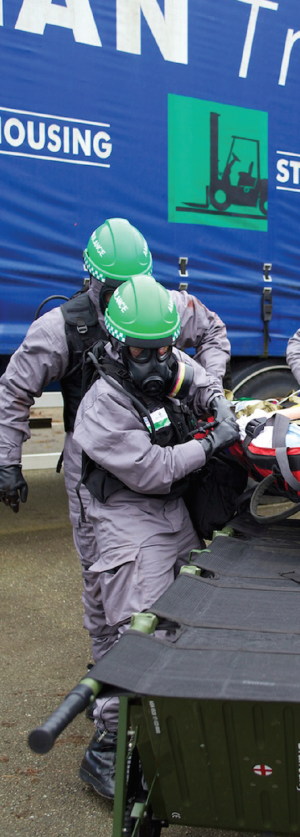
In strong contrast, worldwide annual epidemics of influenza are estimated to result in three to five million cases of severe illness, and 250,000 to 500,000 deaths (WHO, 2014). Besides the influence of low Ebola incidence, and thus, DALYs, in restricting funding for Ebola medical intervention, the cost-effectiveness calculation benchmarks GDP per capita in the African nations affected, and this too is particularly low. This is due to the fact that the total average GDP per capita of the countries most recently hit by Ebola is roughly 600 USD as compared to a figure of roughly 50,000 USD in developed countries such as Germany, France, and the USA (The World Bank, 2015).
To avoid placing a substantially lower value on human life in developing countries using the DALY approach, Barder – an expert from the Center for Global Development (CGD) – argues that a cost-effectiveness threshold of 10,000 USD per DALY averted should be applied. This would have justified spend of at least 1.25 billion USD on the development of a vaccine against Ebola (Barder, 2014). While cost-effectiveness issues may have contributed to the lack of MedCM for Ebola, new awareness appears to have sparked fresh and urgent Ebola MedCM projects as previously outlined. With both the GDP per capita in the affected African countries and the number of disease incidents still comparatively low to many other diseases, what has changed to thrust Ebola onto the international community's radar and attract significant investment?
Most probably, high reaction to the Ebola threat is linked to the realisation that not responding could potentially generate severe economic consequences. In other words, enduring the high costs of medical intervention and development of MedCM became more attractive than ignoring the Ebola threat. As the spread of Ebola outpaced response, more forceful international support was summoned by the United Nations (UN) Security Council in September 2014 when it adopted resolution 2177.
This resolution called on member states to respond urgently to the crisis and refrain from isolating the affected countries. While the unprecedented extent of the Ebola outbreak was perceived to constitute a threat to international peace and security, it is plausible that member states viewed the Ebola threat with more specific content. Namely, at least two major reasons had emerged which possibly led to robust initiation of MedCM. Their influence appears to stem from emotional and financial factors which are often interconnected.
The first reason was certainly the growing awareness that the Ebola virus could be exported to developed countries, bringing its substantial economic impact with it. For example, the spread of Ebola to developed countries could not only lead to higher outbreak incidence (thus, increased DALYs), but also significantly raise the GDP per capita of those affected in developed countries. As previously discussed, with DALYs and GDP per capita elevated, higher investment in medical intervention can be recognised as cost effective.
Of course, it can be argued that the robustness of the healthcare infrastructure in developed countries would be capable of quickly containing the imported cases of Ebola virus. If so, there would not be a significant change in incidence. Thus, the cost-effectiveness model could not really be expected to increase investment. Nonetheless, just the fear of possibly being exposed to the Ebola virus might negatively influence economic productivity in developed countries.
For example, in October 2014, the World Bank publicly warned that Ebola could cause up to 33 billion USD of losses for West Africa's economy. This economic damage is influenced by reduced output caused by changes to behaviour in various economic sectors, for instance when workers/farmers don't show up for work, shop owners close their stores and tourists stay away. Fortunately, international efforts could improve treatment capabilities in the three African countries hit; thus, economic damage could later be estimated at 1.6 billion USD.
Nonetheless, this still represents over 12 percent of the three countries' combined GDP which is quite significant. Besides the economic damage in countries directly hit by Ebola, a further financial loss of 0.5 billion USD was predicted to accumulate for surrounding countries such as Gambia through Kenya to South Africa due to reduced tourism there. This would deliver a total hit to the region of 2.1 billion USD in economic damage (Thomas, 2015). In comparison, if only a fraction of this fear were to reach the combined economies of France, Germany and the US, a negative impact of just 1 percent to GDP would mean a total economic loss of over 200 billion USD.
The second reason the international community may have applied pragmatic force to establish a MedCM programme for Ebola could be based purely on economic defence mechanisms to reduce direct costs. That is, beside the role and interests of governments to protect the health of their people as well as their economic growth rates and stability, there are other financially sound reasons why the international community may have heeded the Ebola threat. Specifically, when considering return on investment (ROI) calculations for previous vaccination projects, supportive guidance for Ebola may be presented.
For example, costs of the WHO's enormous smallpox eradication programme between 1967 and 1979 totalled around 300 million USD. This price has been repaid many times in saving human lives and in the elimination of costs for vaccines, treatment and international surveillance activities. The savings are estimated to be more than 2 billion USD each year (Ehreth, 2003). Since eradication in 1980, the US has recouped nearly 500-fold the value of its contribution to that effort (Kenny, 2014). While the immensity of these savings does not necessarily apply directly to Ebola, which has a higher mortality rate but is less contagious than smallpox, it demonstrates that the potential for substantial savings may have been underestimated.
Indeed, to address the impact of Ebola, the World Bank Group announced in January 2015 that it had mobilised nearly 1 billion USD, comprising 518 million USD for emergency response and 450 million USD to enable trade, investment and employment in Guinea, Liberia and Sierra Leone (The World Bank, 2015).
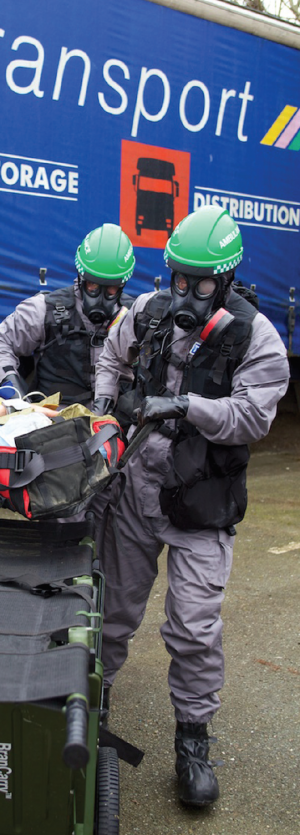
Back in September 2014, the UN had already announced that it would need nearly 1 billion USD for an exceptional, international response to the Ebola outbreak in West Africa. This money was needed for everything from paying health workers and buying supplies to tracing people who had been exposed to the virus. About 23.8 million USD was just to pay burial teams and buy body bags, since the bodies of Ebola victims are highly infectious and workers must wear protection suits (WHO, 2014). In fact, the US Department of Defense (DoD) alone spent a total of 384.9 million USD for Ebola related activities as of December 2014 (DoD, 2014). While these examples may represent only the tip of the iceberg, clear argument already surfaces to justify investment for innovative MedCM which can at least minder the harmful impact of the Ebola virus.
Although the Ebola outbreak example provides evidence that a major change of attitude could be provoked and justified, it remains evident that priorities must be set and that a holistic blanket of protection with MedCM against all potential CBRN agents is not realistic. A formal array of current and future medical intervention programmes will inevitably continue to compete for finite time and financial resources, as well as diverse interests. Since it takes several years to develop new MedCM, governments remain challenged over setting timely and appropriate priorities that can add most value to the protection of their populations and in some cases, economic stability.
For diseases currently causing high prevalence and incidence, industry will continue to identify widespread human vulnerability as high sales potential; accordingly, it will intercept accountability to develop and provide innovative MedCM solutions within the context of free markets. This does not apply; however, to several highly dangerous, but rare CBRN agents. While the application of current influential metrics may affect the amount donors are willing to spend on diseases deemed as non-profitable by industry, lack of MedCM preparedness for the Ebola outbreak in 2014 suggests there is room for improvement.
Analysis of cost effectiveness may indeed be a good parameter when allocating resources for achieving sustainable MedCM solutions against CBRN agents in a timely and effective manner. It is vital, however, that the international community agrees on further prioritising metrics which are capable of capturing unique threat characteristics as presented by some of these diseases. For example, the Ebola case demonstrates that the direct costs of emergency response as well as the interconnection between economic growth and emotional factors should not be ignored. While tremendous foresight will be needed from the international community if there are to be sufficient incentives for responsible MedCM development programmes, investment must go beyond the development of new MedCM.
Most importantly, public procurement contracts must be identified because it is unprofitable for businesses to simply develop a MedCM and wait for events of low prevalence and/or probability to occur. New sources of timely financing and/or incentives, as well as alternative approaches to evaluating the real threat which specific CBRN agents can present to the security and peace of the international community, must be developed and utilized. Undeniably, hindsight shows that lack of preparedness for Ebola led to significantly more costs than if a responsible MedCM were available when it was needed. Moreover, the Ebola experience demonstrates that although the virus appeared to threaten only Africa, it became necessary to share the considerable costs of response across the wider international community.
In this context, more careful prioritising of MedCM development and availability can be viewed as a sort of international health insurance policy: Protection for human and economic health irrespective of whether the event occurs in a particular country or not. While traditional insurance policies potentially benefit everyone in society because its funding is achieved via shared; hence, reasonable contributions to mitigate financial risk from specified threats, core competencies of insurance companies include the coordination of sufficient membership to secure substantial “pay out” capability.
Focusing more tightly on health threats as posed by CBRN agents, and given the massive cost of MedCM development and related stockpiling, parallels can be drawn with the concept of global public goods. This means that national leaders need to realise that everyone is worse off without cooperative and aggregate efforts to create well-funded and effective MedCM capability against CBRN agents that may indeed someday pose risks to the security and peace of the international community. Although this concept may not apply to all CBRN agents (e.g. those causing more limited damage), further economic analysis is required in order to determine various cost-effective case scenarios.
Date: 05/20/2019
Source: Medical Corps International Forum (2/2016)











